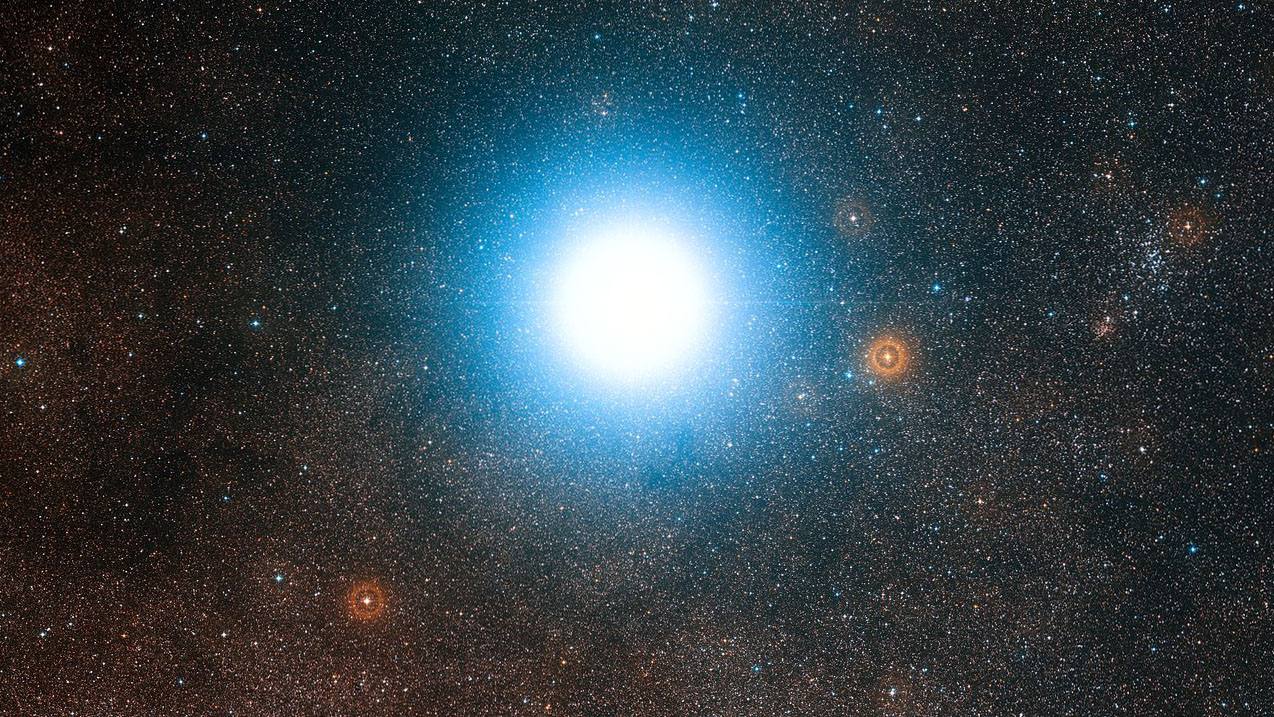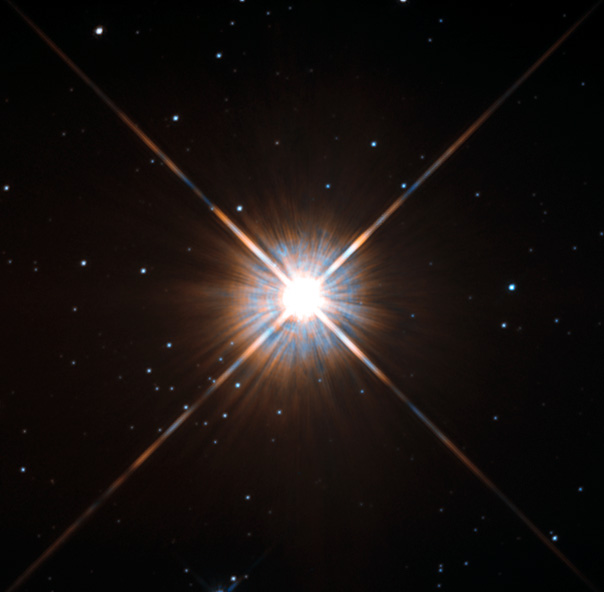*This post may contain affiliate links. This means we may make a commission if you purchase an item using one of our links*
Alpha Centauri is a collection of three stars that form the closest star system to Earth. The brightest star is Alpha Centauri A, while the dimmest is Alpha Centauri C – or Proxima Centauri, a red dwarf circling the central binary stars and residing closer to our Sun than any other star.
Continue reading to discover more about Alpha Centauri and Proxima Centauri and their key similarities and differences as we explore our closest stellar neighbors.
What Is Alpha Centauri?
Table of Contents

Alpha Centauri is a triple star system noted for being the closest to our own solar system, sitting at a distance of roughly 4.2 light years from the Milky Way. Its brightest component star is Alpha Centauri A, which has an apparent visual magnitude of 0.0.
An object’s “apparent magnitude” represents its brightness as seen from Earth. This system was first developed by the ancient Greek astronomer Hipparchus some 2500 years ago – though today’s scale has been quantified and modernized.
Each object’s brightness is compared to the AO main sequence star Vega, which is about 2.1 times more massive than the Sun and glows with a brilliant white hue to the naked eye. Both Vega and Alpha Centauri A have an apparent magnitude of 0.0, meaning they are easily visible in our night sky.
The other two stars contained in the Alpha Centauri trio are Alpha Centauri B and Proxima Centauri. The visual magnitude of Alpha Centauri B is 1.5, and it revolves around an orbit with Alpha Centauri A that lasts about 80 years.
Meanwhile, Proxima Centauri is a red dwarf in the 11th magnitude range that circles the other two stars in the systems over about 555,000 years.
The impressive triple star system sits in Centaurus, a southern constellation, which can be viewed south of the 40-degree north latitude. This system represents the fourth brightest star viewed from Earth, though Proxima Centauri is invisible to the naked eye.
References to Alpha Centauri were made as early as 1592 when the explorer Robert Hues noted its existence. Still, the binary nature of these stars wasn’t recognized until almost a century later, in 1689.
More recent studies suggest that the Alpha Centauri system could be host to a planet-like body that similarly travels around its host star to how we on Earth travel around the Sun. These ongoing discoveries excite the scientific community as we edge closer to discovering whether there are other lifeforms out there.
What Is Proxima Centauri?

Alpha Centauri C – otherwise known as Proxima Centauri – is the smallest and dimmest star within its system. Still, it is the closest star to our Sun at just 4.22 light years away (Alpha Centauri A and B are closer to 4.367 light years away).
Its name, Proxima Centauri, is Latin for nearest to Centaurus, describing its proximity to our own star and solar system. Despite this proximity, Proxima Centauri is invisible to the naked eye due to its size.
This red dwarf star has only 14% the diameter of our own Sun and 12.5% of its mass. Still, many scientists believe it could be around 33 times denser than the star at the center of the Milky Way. It is classed as a red dwarf, the smallest, coolest, and most common of all the stars in the main sequence.
Like our Sun, Proxima Centauri converts hydrogen to helium via the process of nuclear fusion in its core. But – thanks to possessing a luminosity of just 0.17% of our Sun – it will have a far longer lifespan. Our Sun is roughly halfway through its ten billion-year lifespan, but Proxima Centauri could remain at its current life stage for another four trillion years.
Eventually, both stars will likely reach a similar fate. Once the hydrogen supply is exhausted, the stars will convert into white dwarfs as they lack the mass required to produce a black hole or neutron star.
Similarities Between Alpha Centauri And Proxima Centauri
- Both Alpha Centauri and Proxima Centauri refer to stellar masses.
- They are both a part of the same star system, the closest star system to Earth.
- All stars within Alpha Centauri are locked in a gravitational orbit with one another.
- Alpha Centauri and Proxima Centauri are both part of the main sequence of stars.
- They sit between 4.2 and 4.37 light years from Earth.
Differences Between Alpha Centauri And Proxima Centauri
- Alpha Centauri describes a triple star system, while Proxima Centauri is the name of one of the stars within this system.
- Proxima Centauri wasn’t discovered until 1915, centuries after astronomers first spotted Alpha Centauri in the night sky.
- Alpha Centauri predominantly refers to two binary stars similar in nature to our own Sun. In contrast, Proxima Centauri is a third star gravitationally bound to this system but quite different in nature.
- Alpha Centauri A is a yellow main sequence star, Alpha Centauri B is an orange main sequence star, and Proxima Centauri is a red dwarf.
- Alpha Centauri A and B are far larger and brighter than Proxima Centauri. Alpha Centauri A possesses roughly 1.1 times the mass of our own Sun and 1.5 times its luminosity. Alpha Centauri B has about 0.9 times the mass of our Sun and 0.5 times the luminosity.
- In contrast, Proxima Centauri has about 0.13 times the mass of our Sun and only 0.17 times its luminosity.
Summary
Alpha Centauri describes a star system, while Proxima Centauri is the name assigned to one of the stars in this system. The former is the closest star system to our Sun, while the latter is the nearest individual star to our solar system.
References
Alpha Centauri | Distance, Planets, & Facts | Britannica
Alpha Centauri: Facts about the stars next door | Space
What is Alpha Centauri? Definition of Alpha Centauri, Alpha Centauri Meaning – The Economic Times (indiatimes.com)
Alpha Centauri, star system closest to our sun | Brightest Stars | EarthSky
Magnitude Scale (kde.org)
https://earthsky.org/space/this-date-in-science-discovery-of-proxima-centauri/#:~:text=October 12, 1915.&text=That star is Proxima Centauri,Star of Large Proper Motion.

